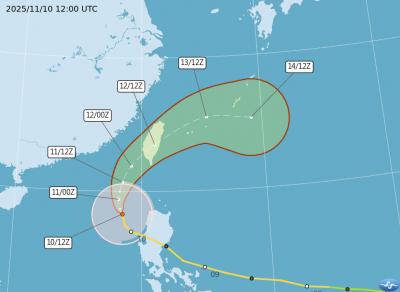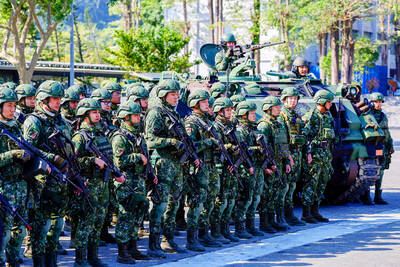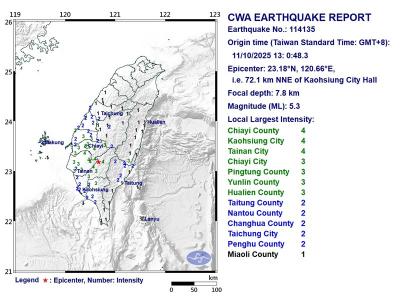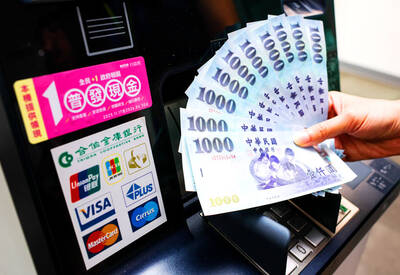The Industrial Development Bureau (IDB) yesterday rejected an appeal by a group of local academics to hold a public debate on a plan to build a giant petrochemical complex in a wetlands area in central Taiwan.
The bureau, which falls under the Ministry of Economic Affairs, said that as the project was initiated by Kuokuang Petrochemical Technology Co (KPTC), the academics should debate the issue with the company rather than with the bureau.
“The IDB would have been more than willing to provide details of the government’s policy on the development of the petrochemical industry, if the academics had asked for that,” IDB Director-General Woody Duh (杜紫軍) said.
He said the government supports the project because it was expected to contribute to the development of the local petrochemical industry, which has played an important role in the growth of Taiwan’s economy over the past decades.
However, 1,259 local university professors and academics have opposed the project and on Aug. 3 released a joint petition stating their objections.
Chen Chi-chung (陳吉仲), a professor at National Chung Hsing University’s Department of Applied Economics and a spokesmen for the anti-Kuokuang campaign, said yesterday the government had so far not offered a policy response to the petition.
Chen said, the IDB instead ran advertisements in local newspapers for two days this month warning that people’s daily lives could be adversely affected if the petrochemical industry were to be scrapped.
Chen stressed that his group was not targeting the entire petrochemical industry.
“A public debate on the advantages and disadvantages is necessary because the Kuokuang project, if implemented, may gravely affect the lives of the people in the area and the survival of Indo-Pacific humpback dolphins and other marine species in the waters off Taiwan’s western coast,” Chen said.
With the project’s environmental impact assessment (EIA) entering a decisive stage, Chen urged the government to uphold the principle of administrative neutrality and refrain from abusing its administrative power by interfering with the EIA.

The Central Weather Administration (CWA) today issued a sea warning for Typhoon Fung-wong effective from 5:30pm, while local governments canceled school and work for tomorrow. A land warning is expected to be issued tomorrow morning before it is expected to make landfall on Wednesday, the agency said. Taoyuan, and well as Yilan, Hualien and Penghu counties canceled work and school for tomorrow, as well as mountainous district of Taipei and New Taipei City. For updated information on closures, please visit the Directorate-General of Personnel Administration Web site. As of 5pm today, Fung-wong was about 490km south-southwest of Oluanpi (鵝鑾鼻), Taiwan's southernmost point.

Almost a quarter of volunteer soldiers who signed up from 2021 to last year have sought early discharge, the Legislative Yuan’s Budget Center said in a report. The report said that 12,884 of 52,674 people who volunteered in the period had sought an early exit from the military, returning NT$895.96 million (US$28.86 million) to the government. In 2021, there was a 105.34 percent rise in the volunteer recruitment rate, but the number has steadily declined since then, missing recruitment targets, the Chinese-language United Daily News said, citing the report. In 2021, only 521 volunteers dropped out of the military, the report said, citing

A magnitude 5.3 earthquake struck Kaohsiung at 1pm today, the Central Weather Administration said. The epicenter was in Jiasian District (甲仙), 72.1km north-northeast of Kaohsiung City Hall, at a depth of 7.8km, agency data showed. There were no immediate reports of damage. The earthquake's intensity, which gauges the actual effects of a temblor, was highest in Kaohsiung and Tainan, where it measured a 4 on Taiwan's seven-tier intensity scale. It also measured a 3 in parts of Chiayi City, as well as Pingtung, Yunlin and Hualien counties, data showed.

Nearly 5 million people have signed up to receive the government’s NT$10,000 (US$322) universal cash handout since registration opened on Wednesday last week, with deposits expected to begin tomorrow, the Ministry of Finance said yesterday. After a staggered sign-up last week — based on the final digit of the applicant’s national ID or Alien Resident Certificate number — online registration is open to all eligible Taiwanese nationals, foreign permanent residents and spouses of Taiwanese nationals. Banks are expected to start issuing deposits from 6pm today, the ministry said. Those who completed registration by yesterday are expected to receive their NT$10,000 tomorrow, National Treasury